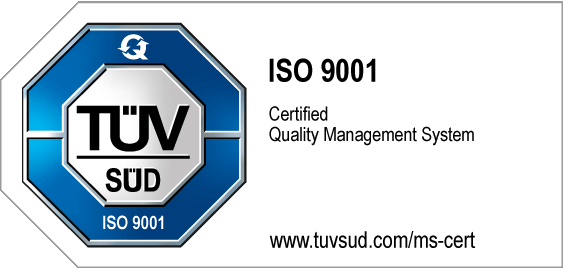Foresight – Definition & Explanation
Foresight is the structured and systematic anticipation of potential future developments. It is an umbrella term for methods aimed at preparing for what lies ahead. Various tools and methods are available for foresight activities. These enable companies to align their strategies with emerging opportunities and challenges and to prepare for multiple possible future scenarios.
Foresight – At a Glace
| Foresight as a strategic tool: | Foresight enables companies to prepare for possible future scenarios using well-founded methods such as scenario planning or the Delphi method, improving their ability to assess risks and opportunities. |
| High value in times of uncertainty: | In dynamic markets and disruptive environments, foresight provides a solid foundation for long-term decisions – especially through the combination of data, research, and vision. |
| Diverse methods in use: | Besides the Delphi method and scenario planning, trend analysis and horizon scanning are among the most important foresight tools. |
| Typical challenges: | Poor data quality, internal resistance, lack of expertise, and technological complexity are among the most common risks when implementing foresight processes. |
What is Foresight?
Foresight is the systematic engagement with potential future developments to recognize opportunities early and better assess risks. The goal is to reduce uncertainty and actively shape the future – for both companies and society.
It’s about the ability to anticipate what might happen. Foresight requires a methodical approach to exploring possible future scenarios with a multidisciplinary, practical outlook. The aim is to avoid stepping blindly into the future and instead help shape it wherever possible.
Both society and businesses should be prepared to act early in the face of change and challenges. The right methods not only identify opportunities but also define potential risks and threats.
For businesses especially, the future holds both growth opportunities and risks. To assess these, companies and organizations engage in foresight activities to prepare for potential future changes.
Foresight does not provide precise predictions. Instead, it focuses on preparing for possible developments – for instance, to prevent crises or avoid disasters.
Foresight Methods
Strategic foresight utilizes a wide range of methods from both scientific and practical disciplines. The goal is to better understand complex interrelations, recognize future developments early, and enable well-informed strategic decisions. Some of the best-known foresight methods include the Delphi method, scenario planning, trend analysis, and horizon scanning.
Delphi-Method
The Delphi method is a systematic expert survey. Experts are asked to provide input on an uncertain topic over multiple rounds. Participants can see other responses during the process and adjust their own answers accordingly.
This method delivers diverse perspectives, supports consensus building, and fosters communication about the future.
Scenario Planning
Scenario planning is widely used in politics, business, and science for strategic planning. It involves developing alternative hypothetical future scenarios, each describing a potential future situation, influencing factors, and development pathways.
It is particularly useful when a subject is surrounded by many uncertainties. The aim is always to analyze and present possible future developments in relation to one another.
Trend Analysis
Trend analysis focuses on systematically identifying, observing, and evaluating current developments that may impact the future. This includes technological, societal, economic, or ecological trends.
Early engagement with trends enables companies to discover innovation potential, minimize risks, and align their strategic direction with future requirements.
Horizon Scanning
Horizon scanning is an exploratory method (similar to exploratory scenario building) aimed at detecting early signs of change at the “edge of perception.” It focuses on the ongoing observation of weak signals, new technologies, societal shifts, or geopolitical changes that could become significant in the long term.
This method helps organizations recognize uncertainties, seize emerging opportunities early, and build resilience against disruptive developments.
Risks and Challenges of Strategic Foresight
Despite its strategic potential, foresight is not without risks. Especially in companies, long-term visions often clash with short-term thinking, which makes implementation difficult. Key challenges include:
Uncertain or incomplete data: Poor data quality can lead to faulty forecasts and flawed strategic assumptions.
Lack of methodological expertise: Without experience in interpreting weak signals, there’s a risk of mixing speculation with proper analysis.
Missing implementation: Visions and scenarios often remain theoretical without clear integration into operational processes.
Internal resistance: New ideas frequently encounter skepticism and internal barriers.
Technological complexity: New tools or platforms often fail due to missing interfaces or lack of technical skills.
Häufige Fragen und Antworten
A foresight process is a structured approach to systematically explore possible future scenarios. It combines data from various sources with research and creative methods to develop new perspectives and provide a solid foundation for strategic decision-making.
Foresight management refers to embedding strategic foresight into the organization. It builds structures that help identify future potentials, develop competencies, and integrate relevant trends into organizational processes.
Foresight methods are tools used to systematically identify and assess potential future developments. These include scenario planning, Delphi studies, and trend analysis. Such methods combine research, expert knowledge, and quantitative data to reveal options for action and inspire new thinking.
In practice, corporate foresight helps leaders identify uncertainties early and adjust their strategies accordingly. It is often used to develop innovative business models and visions around future topics.
Sources:
- Gill Ringland, The role of scenarios in strategic foresight, Technological Forecasting and Social Change, Volume 77, Issue 9, 2010, Pages 1493-1498, ISSN 0040-1625, https://doi.org/10.1016/j.techfore.2010.06.010.
- Nayak, A. (2009). “Chapter 3: Strategic Foresight”. In Handbook of Research on Strategy and Foresight. Cheltenham, UK: Edward Elgar Publishing. Retrieved Mar 24, 2025, from https://doi.org/10.4337/9781848447271.00009


